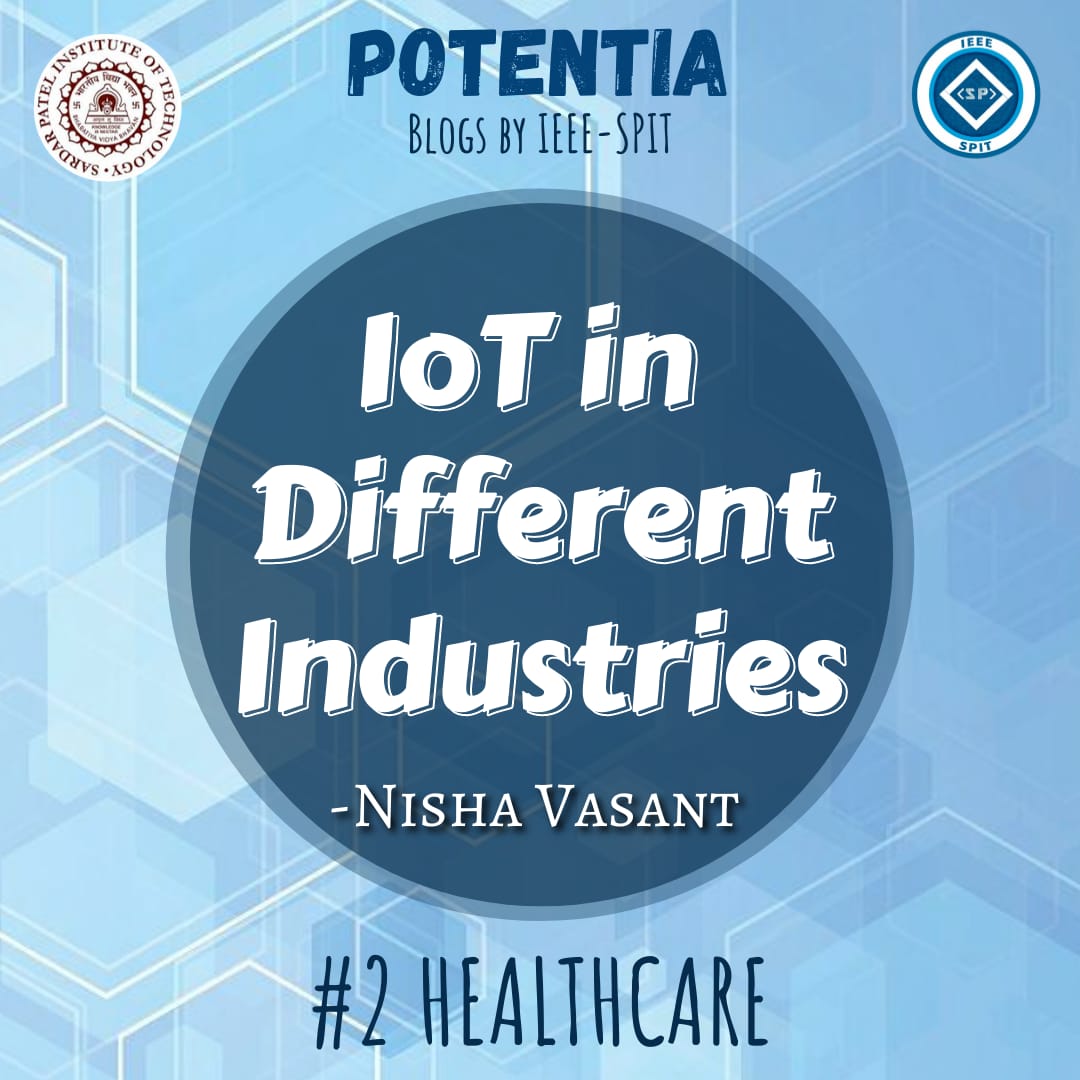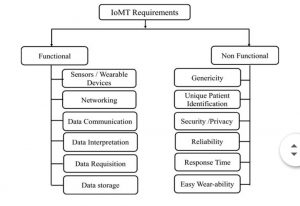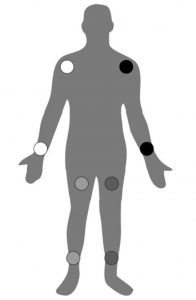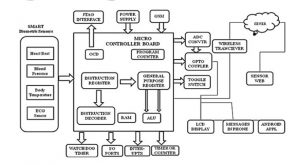
Health issues in this age are no longer confined to the aged and the weak.In the competitive modern work environment, very few have the time for regular visits to the doctor. It is clear that the younger population faces time constraints and the older ones have mobility constraints. This is the perfect opportunity for recent progress in sensing, embedded systems, wireless communication technology and related fields to come together for Remote Health Monitoring.
The Internet of Medical Things (IoMT) will be a network of sensors collecting health data for patients, for people involved in medical trials and for anyone who wishes to be a part of the system. Many physiological parameters such as pulse, blood pressure and temperature can now be monitored very easily. Recent developments in sensors that collect data from the skin, as a lens on the eye or from sweat will soon widen the possibilities. The basic concept is an integration of healthcare devices with computer networks to receive data in real time. Not only does this allow for long term monitoring of vital parameters but may also alert the right authorities in case of an emergency.

Architecture of a Healthcare Monitoring System
- Parameters that can be monitored
- Blood Glucose – Using non invasive micro-strip or microwave blood glucose sensors. In the long term, this gives an idea of the effect of various foods and medicines on a person’s health so diabetics can have a tailored regimen without having to abstain from their favorite foods. Also, it can trigger an alarm when the person has extremely low or extremely high glucose levels. This can also be connected to a smart insulin pump.
- Heart Rate – Using non-invasive opto-electronic sensors or a capacitive electrode for higher precision. Monitoring the pulse is especially required for those living with cardiac issues such as arrhythmia.
- Blood Pressure – A recent study has developed a sensor that can be worn as a band on the wrist. Constant BP monitoring will be required for those with hypertension who run a higher risk of stroke if BP stays high for long periods of time. It will show trends in BP fluctuations for study and also alert someone in case of an emergency.
- Body Temperature – Despite thermometers being easily accessible, they are not autonomous. A connected temperature monitoring device will be required to monitor those under treatment for diseases that cause a fever and to track progress even when someone is not available to monitor the patient at all times. These can easily trigger an alert when body temperature crosses a certain threshold.
- Fall Detection – Falling down on the stairs or in a slippery bathroom is particularly risky for the elderly as they often face broken bones and require extensive surgery (even a hip replacement) to recuperate. As more and more elderly live separately, fall detection using an accelerometer along with a gyro to immediately alert a neighbour/relative can ensure emergency treatment is immediately available.
Many other sensors are available that can detect such parameters as asthma related coughs, physiological indications from the skin, sweat and so on. While most vital parameter monitoring will be crucial for those in rehabilitation and who are recuperating, smart fabrics will make this easier and non-invasive.

Common positions to place biometric sensors
- Construction of a Remote Health Monitoring System

Block Diagram of a remote Health Monitoring System for a recuperating patient
Hardware Requirements:
- Biometric sensors
- Sensor Interface circuits – Noise filters, Instrumentation amplifiers, Analog to Digital conversion
- Microcontroller and Digital Signal Processing
- Communication Module – WiFi, Bluetooth, Zigbee or GSM/GPRS
Software Requirements:
- Embedded C – For the MCU
- Mobile Application – For the user to control the device and monitor readings
- Web or Desktop Application – For the doctor and concerned authorities
Cloud Requirements:
- Storage – For batch data and continuous streams from sensors
- Querying – For convenient database management
- Analysis – Big Data analysis to spot trends and identify the effects of certain regimens on a patient or to find the cause of certain patient behaviour

Functional and Non-functional requirements of an IoMT system
- Advantages of Remote Health Monitoring
For Patients
- Better outcomes and quality in treatment
- Real-time support and intervention to improve management and reduce errors
- Prevent emergencies and re-admissions
- Reduced Hospital stay (and hence, reduced hospital bills)
For Care Providers
- Real-time access to patient health data
- Continuous monitoring of patient irrespective of location
- Precision in treatment resulting from accuracy, reliability and relevance of data
- Cost reduction from re-admission and hospital stays
For Insurance Payers
- Visibility on patient compliance practices
- Acceptability and accountability from patients and care providers
- Reduced costs of care and monitoring
- Real time processing of patient documents
- Main Challenges
- Vital parameters of the body may not be easily accessible non-invasively
- Noise generated from the slightest movement or external disturbance
- Need for real-time processing with low power consumption
- Handling the sheer volume of data that may be generated
- User attitudes, confidentiality, legal issues
- References
[1] Vinay Chowdary, Vivek Kaundal, Paawan Sharma, and Amit Kumar Mondal, Implantable Electronics: Integration of Bio-Interfaces, Devices and Sensors. Medical Big Data and Internet of Medical Things: Advances, Challenges and Applications, 2019.p. 55–79.
[2] Sitaramanjaneya Reddy Guntur, Rajani Reddy Gorrepati, and Vijaya R. Dirisala, Internet of Medical Things: Remote Healthcare and Health Monitoring Perspective. Medical Big Data and Internet of Medical Things: Advances, Challenges and Applications, 2019.p. 271–297.
